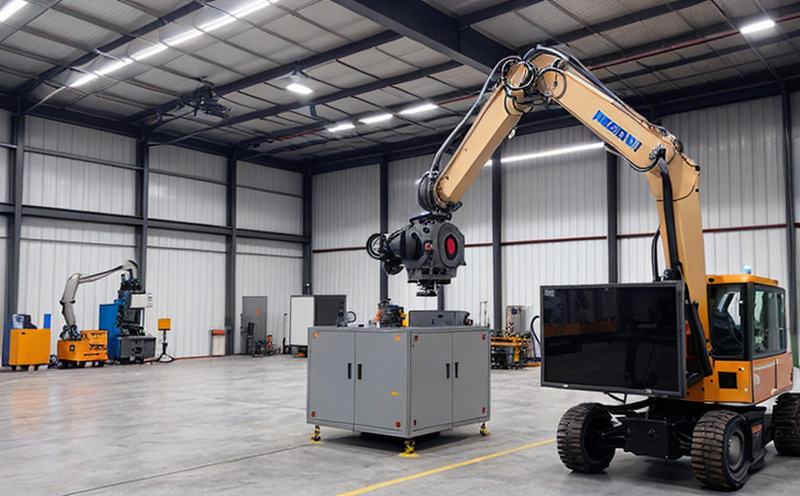EN 50581 Restriction of Hazardous Substances in Manufacturing Robots
The European standard EN 50581 is a crucial document within the framework of RoHS (Restriction of Hazardous Substances) directives. It specifically addresses the requirement for electronic and electrical equipment to contain limited quantities of certain hazardous substances, including lead, mercury, cadmium, hexavalent chromium, polybrominated biphenyls (PBB), and polybrominated diphenyl ethers (PBDE).
The implementation of EN 50581 in the context of manufacturing robots is essential for compliance with both European Union regulations and international standards. This standard ensures that robotics components are manufactured without hazardous materials, thereby reducing environmental impact and ensuring worker safety during production and use.
Manufacturing robots often contain a wide array of electronic components and materials. Compliance with EN 50581 requires meticulous attention to the sourcing of raw materials used in these robots. The standard mandates rigorous testing procedures for various parts, including circuit boards, sensors, actuators, and other mechanical elements that might come into contact with human operators.
Testing under this standard involves several key steps: material identification, chemical analysis, and compliance verification. Material identification typically begins by examining the bill of materials (BOM) for each robot component to determine if it contains any restricted substances. Chemical analysis is then conducted using advanced spectroscopic methods such as ICP-MS or XRF to measure trace elements.
Compliance verification involves comparing test results against predefined thresholds set out in EN 50581. If a part fails to meet these standards, further investigation into the supply chain and manufacturing processes is necessary to identify potential contamination sources. This process ensures that all robots adhere strictly to the limits imposed by this standard.
For R&D engineers working on new robotics projects, understanding EN 50581 early in development can significantly streamline compliance efforts later down the line. By incorporating sustainable practices from the outset, they can avoid costly rework and ensure their products meet stringent environmental protection requirements.
In summary, adhering to EN 50581 is not just about avoiding penalties for non-compliance; it's also an opportunity to innovate sustainably while maintaining high-quality standards in manufacturing robots. Proper execution of this standard can lead to enhanced product reputation among eco-conscious consumers and improved operational efficiency within production facilities.
- Material identification
- Chemical analysis using ICP-MS or XRF
- Compliance verification against EN 50581 thresholds
Why It Matters
Adherence to EN 50581 is critical for several reasons. Firstly, it helps protect human health by minimizing exposure to toxic substances found in electronic and electrical equipment. Secondly, compliance fosters sustainable manufacturing practices that reduce waste generation throughout the lifecycle of a robot product. Thirdly, meeting this standard enhances brand reputation among environmentally conscious consumers who value responsible production methods.
From an operational perspective, ensuring compliance with EN 50581 reduces risks associated with non-compliance fines and potential damage to business reputation due to public relations issues arising from unethical sourcing practices. Additionally, it allows companies to tap into emerging markets that prioritize green technology solutions over conventional alternatives.
Moreover, implementing stringent quality controls based on EN 50581 guidelines ensures consistent product performance across different models and generations of robots. This consistency is particularly important in industries reliant on precise automation systems where even minor deviations could have significant consequences for end-user satisfaction.
In conclusion, embracing EN 50581 as part of one’s quality management strategy demonstrates commitment to ethical business practices that contribute positively towards society and the environment. By doing so, organizations position themselves favorably within competitive landscapes while contributing meaningfully toward global sustainability goals.
Eurolab Advantages
At Eurolab, we pride ourselves on offering comprehensive testing services tailored specifically to meet the stringent requirements outlined in EN 50581. Our team of experts ensures that every aspect of your robotics project complies fully with relevant regulations and industry best practices.
- Experienced professionals specializing in RoHS compliance
- State-of-the-art laboratory facilities equipped for precise testing
- Comprehensive reporting services providing detailed insights into test outcomes
We understand the importance of accurate and timely results when it comes to meeting regulatory deadlines. That’s why our laboratories are staffed with qualified personnel who have extensive experience working with complex robotic systems.
In addition, Eurolab offers flexible service options that cater to diverse client needs ranging from single-item testing to full-scale facility audits. Whether you’re a small startup or an established manufacturing giant, we can tailor our services to fit your unique requirements.
Our commitment to excellence extends beyond mere compliance; it includes continuous improvement and innovation in testing methodologies. By staying at the forefront of technological advancements, Eurolab guarantees that clients receive cutting-edge solutions for all their testing needs.





